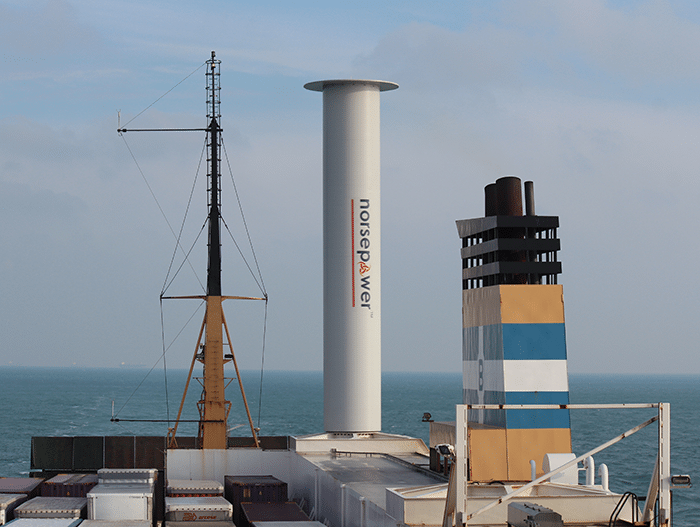
Op-Ed: Real-time wind monitoring for wind-assisted propulsion
Written by
In these images we can see Vaisala ultrasonic wind sensors installed on a vessel that is using Norsepower’s rotorsails. (Credit: Norsepower)
By Mikko Nikkanen, Head of Maritime at Vaisala
As the shipping industry moves to cut fuel consumption and reduce carbon emissions as regulations tighten, more operators are starting to pay serious attention to one promising solution.
Wind-assisted ship propulsion — or WASP —utilizes wind power and rotor sails, mechanical sails or other wind propulsion technologies to propel ships, reduces carbon emissions and decreases the industry’s reliance on expensive, polluting fossil fuels.
By harnessing the power of the wind, WASP can help reduce fuel consumption and emissions while also increasing the sustainability of the shipping industry. Despite the evolving technology’s vast promise, its success hinges on the accuracy and reliability of real-time and remote wind measurement.
Existing wind sensors used in commercial shipping vessels are often inadequate in providing accurate information or are not positioned correctly to maximize the benefits of wind-assisted propulsion. High-quality, accurate and dependable wind sensing technology is critical to maximizing wind-assisted propulsion — not only for collecting the most wind but also for optimizing power when the air is still. Fortunately, technological advancements make WASP an increasingly viable option for modern shipping vessels.
The goal of WASP is to maximize thrust from the wind, and today’s marine-proof ultrasonic wind sensors and lidars for remote wind measurements empower with accurate, precise data on wind speed and direction to do precisely that. These solutions make it possible to take full advantage of the available wind power to achieve optimal performance, reduce fuel consumption and minimize carbon emissions. The ability to nowcast upcoming wind conditions and the addition of hyperlocal weather also significantly affect propulsion power and system performance.
In addition to optimizing and maximizing the benefits of wind-assisted propulsion, lidar-based real-time remote wind measurement technologies also have the potential to improve safety in the shipping industry, equipping wind propulsion systems automatically with information to avoid potential hazards and reduce the risk of accidents.
Wind-assisted ship propulsion is the future of sustainable shipping — and real-time and remote wind measurement technologies are the key to unlocking its full potential. By delivering precise measurements, these solutions enable automation systems to recognize and leverage all wind conditions, use the maximum available propulsion power and calculate the corresponding fuel savings and improve the safety of the system. With WASP technology, shipping companies can reduce fuel consumption and CO2 emissions and ultimately pave the way for a greener, cleaner global shipping industry.
Now is the time to embrace this promising solution and sail toward a brighter, more sustainable future!




